La mostra, organizzata dal Costume Institute al Met di New York, celebra l’intera carriera di Alexander McQueen: dalla sua sfilata di fine corso al Central Saint Martins College di Londra (1992), fina all’ultima presentazione parigina che ha avuto luogo dopo la sua morte nel febbraio 2010. Lui era unico, un outsider che non si lasciava condizionare dal giudizio altrui, tanto che persino quando Anna Wintour lo chiamò per un servizio sulle nuove generazioni di stilisti inglesi, lui rifiutò non curandosi assolutamente della sua possibile reazione. Era un artista e i suoi vestiti erano solo una parte della sua arte. La moda era il suo mezzo di espressione e la sfilata-show era il modo migliore per comprendere l’interminabile ricerca creativa che lo ossessionava. Per ogni collezione prima sceglieva il tema principale della sfilata e solo in un successivo momento iniziava a disegnare gli abiti. Inevitabilmente come quasi ogni artista, dopo aver creato, aveva bisogno di distruggere il suo lavoro e ricominciare di nuovo per la successiva sfilata. Ogni show era diverso dall’ altro e la retrospettiva “Alexander McQueen: Savage Beauty” mostra tutta questa varietà, dividendo la sua carriera creativa in sei sezioni:

The Savage Beauty exhibition, organized by The Costume Institute at Met in NY, celebrates the entire career of Alexander McQueen, from his Central Saint Martins postgraduate collection (1992) to his last runway presentation, which took place after his death in February 2010. He was unique because he didn’t care nobody’s judgment and even when Anna Wintour called him for a shooting on the new Brit fashion generation, he refused not caring about her possible reaction. He was an artist and his clothes were just a part of his art. For each collection, he first chose the main theme of the show and then began to draw the clothes. Fashion was his medium of expression and the show was the best way to understand his endless creative research. As quite every artist does, after creating, he needed to destroy his work and start over again for the next fashion show. Every show was different from the other and the exhibition at the Met shows all this variety by dividing his creative career into six sections:
- Mente Romantica – “Devi conoscere le regole per romperle. Io sono qui per questo: demolire le regole, per mantenere la tradizione “.
McQueen promuoveva la libertà di pensiero e di espressione, infatti giocava in solitaria senza seguire le regole della moda, ma solo dell’immaginazione. Egli metteva in atto la fantasia attraverso i suoi metodi rivoluzionari di taglio e di costruzione: creava qualcosa di assolutamente nuovo reinterpretando le antiche tradizioni sartoriali imparate a Savile Row. Questo atteggiamento si è manifestato fin dalla sua prima collezione (1992), al Central Saint Martins College intitolata Jack lo squartatore insegue le sue vittime, con una particolare giacca finanziera a tre bottoni, o con i bumsters della collezione Taxi Driver (ai 93/94), pantaloni così bassi sui fianchi che svelavano le natiche, o con le creazioni da direttore artistico di Givenchy (1996-2001).
Romantic Mind – “You’ve got to know the rules to break them. That’s what I’m here for, to demolish the rules but to keep the tradition.”
McQueen promoted freedom of thought and expression without following the fashion rules. He applied his imagination through his revolutionary methods of cutting and construction. He created something new and modern reinterpreting so ancient tayloring tradition learnt at Savile Row. This was a strong attitude since his first collection (1992) at Central Saint Martins College entitled Jack the Ripper Stalks His Victims with a particular three point origami frockcoat, or with the “bumsters”, so low pants on the hips that they revealed the buttocks in his Taxi Driver collection (fw93/94), or with the work done at Givenchy(1996-2001).
- Gotico Romantico e la Stanza degli orrori – “La gente trova che le mie cose siano aggressive. Io non le vedo come aggressive. Io le vedo come romantiche ed hanno a che fare con un lato oscuro della personalità “.
McQueen è stato particolarmente ispirato dal XIX secolo, soprattutto dal gotico vittoriano e così come i racconti di Edgar Allan Poe sono storie al limite tra horror e romanticismo, Alexander riflette sui contrasti e la perenne tensione dialettica tra vita e morte, luce e tenebre. In questa sezione ci sono opere come Supercalifrailisticexpialidocious (fw 02/03), The Horn of Plenty (fw 09/10) e una delle ultime creazioni della collezione fw10/11, che mostrano come il tema gotico potesse combinarsi in McQueen. Nella Stanza degli orrori sono mostrati tutti gli accessori di ispirazione fetish prodotti in collaborazione con designer come il gioielliere Shaun Leane e il cappellaio Philip Treacy. McQueen una volta disse – Mi piace l’accessorio per il suo aspetto sadomaso! – Tante persone infatti criticavano i suoi lavori sostenendo che a lui non piacessero le donne. Naomi Campbell lo difese dicendo che lui amava le donne, e che una sfilata di McQueen era una performance, era allo stesso tempo tortura e divertimento, perché le modelle potevano provare qualcosa di diverso e fuori della loro zona di comfort. Era un modo per mettersi alla prova.
Romantic Gothic and Cabinet of Curiosities – “People find my things sometimes aggressive. But I don’t see it as aggressive. I see it as romantic, dealing with a dark side of personality.”
McQueen was particularly inspired by the nineteenth century, especially the Victorian Gothic. So as Edgar Allan Poe’s stories mixed horror and romance, Alexander reflected on opposites such as life and death, lightness and darkness. In this section there are works like Supercalifrailisticexpialidocious (fw 02/03), The Horn of Plenty (fw 09/10) and one of the last creation from the fw10/11 collection, that show how McQueen combined gothic theme. In the Cabinet are shown all the fetish inspired accessories produced in collaboration with designers such as Shaun Leane and Philip Treacy. He once remarked – I like the accessory for its sadomasochistic aspect! – So many people criticized his works telling that he didn’t like women. Naomi Campbell explained that he loved women, but a McQueen art performance was a torture and the most fun thing at the same time. Models could do something out of their comfort zone, it was a way to test themseves.
- Nazionalismo romantico – “Il motivo per cui sono patriottico è perché penso che la Scozia sia stata trattata ingiustamente. E ‘commercializzata in tutto il mondo come patria delle cornamuse. Ma nessuno guarda mai cosa c’è dietro tutto questo. “
L’orgoglio di McQueen per il suo patrimonio scozzese è mostrato in questa sezione con le serie di abiti ispirati ai moti giacobiti in Highland Rape (fw95/96), dove è stato introdotto il tartan McQueen per la prima volta, e nelle Widow of Culloden (fw06/07) dedicato alla battaglia finale dei moti con il genocidio degli scozzesi da parte degli inglesi.
Romantic Nationalism – “The reason I’m patriotic about Scotland is because I think it’s been dealt a really hard hand. It’s marketed the world over as bagpipes. But no one ever puts anything back into it.”
McQueen’s pride for his Scottish heritage is shown in this section and it’s so visible in the Jacobite Risings inspiration for Highland Rape (fw95/96), where it was introduced McQueen tartan for the first time, and for Widows of Culloden (fw06/07) referred to the final battle of England against Scotland.
- Esotismo romantico – “Voglio essere onesto riguardo il mondo in cui viviamo e a volte il mio orientamento politico influenza il mio lavoro. La moda a volte può essere veramente razzista, poiché guarda i vestiti delle altre culture come costumi. Bisogna abbattere queste barriere “.
McQueen era affascinato dall’esotismo. India, Cina, Africa e Turchia sono stati una presenza costante nelle sue collezioni e ha spesso reinterpretato i kimono giapponesi. Ma anche il cinema e l’arte contemporanea sono stati fonte di ispirazione per i suoi show: It’s Only a Game (SS05) fu messo in scena come un gioco di scacchi ispirato ad una scena di Harry Potter e la pietra filosofale (2001), una battaglia tra Oriente (Giappone) e Occidente (America ); in Voss (ss01) tutti gli abiti avevano riferimenti esotici, e l’ambientazione dello show era ispirata ad una foto di Joel-Peter Witkin (1983), che raffigurava una donna obesa collegata tramite un tubo di respirazione ad muso di scimmia. Nella performance di McQueen,la scrittrice feticista Michelle Olley interpretò il ruolo della donna. “Modelle bellissime camminavano per la stanza, poi improvvisamente è stata rivelata questa donna che non sarebbe stata considerata bella. Si trattava di cercare di intrappolare qualcosa non convenzionalmente bello per far vedere che la bellezza viene da dentro. “
McQueen was fashinated by exoticism. India, China, Africa, and Turkey were a constant presence in his collections and he often reinterpreted Japan kimonos. Films and contemporary art were also inspirational: It’s Only a Game (ss05) was a show staged as a chess game inspired by a scene of Harry Potter and the Sorcerer’s Stone (2001), which pitched the East (Japan) against the West (America); In VOSS (ss01) there were exoticized garments, but it was inspired by a photograph of Joel-Peter Witkin (1983), which depicted an obese woman connected via a breathing tube to a stuffed monkey. In McQueen’s show, the fetish writer Michelle Olley played the role of the woman. “These beautiful models were walking around in the room, and then suddenly this woman who wouldn’t be considered beautiful was revealed. It was about trying to trap something that wasn’t conventionally beautiful to show that beauty comes from within.”
- Primitivismo romantico – “Io cerco di accentuare la silhouette. Per modificare la silhouette bisogna cambiare il modo di guardare le cose. Quello che faccio è guardare antiche tribù africane, e il modo di vestire. I rituali del modo di vestire. C’è un sacco di tribalismo nelle collezioni “.
McQueen è tornato più volte al tema del primitivismo. La collezione Nichilismo (ss94) è stata una reazione ai designer che romanzano i vestiti etnici, che ad esempio realizzano abiti di ispirazione Masai con materiali che i Masai non potrebbero mai permettersi. Molte volte ricopriva gli abiti di fango, come in Eshu (fw00/01), una collezione ispirata dalla religione Yoruba. It’s a Jungle Out There (fw97/98) invece è stato ispirato da un animale come la gazzella di Thomson. Era una meditazione sul rapporto tra predatore e preda. The stoyline of Irene (ss03) ha inscenato un naufragio e la passerella era popolata di pirati, conquistatori e indios amazzonici con una glorificazione dello Stato di Natura e dell’uomo naturale, senza le restrizioni artificiali costruite dalla civiltà.
Romantic Primitivism – “I try to push the silhouette. To change the silhouette is to change the thinking of how we look. What I do is look at ancient African tribes, and the way they dress. The rituals of how they dress. There’s a lot of tribalism in the collections.”
McQueen returned several times to the theme of primitivism. Nihilism (ss94) “was a reaction to designers romanticizing ethnic dressing, like a Masai-inspired dress made of materials the Masai could never afford.” Many of the pieces were coated with mud like in Eshu (fw00/01), a collection inspired by the Yoruba religion. It’s a Jungle Out There (fw97/98) was inspired by the Thomson’s gazelle. It was a meditation on the relationship between predator and prey. The storyline of Irere (ss03) involved a shipwreck at sea and was peopled with pirates, conquistadors, and Amazonian Indians. McQueen glorified the state of nature and the “natural man” unfettered by the artificial constructs of civilization.
- Naturalismo Romantico – “Ho sempre amato i meccanismi della natura e il mio lavoro ne è sempre influenzato”.
La natura era la più grande fonte di ispirazione per McQueen, così come per molti artisti del movimento romantico che presentavano la natura stessa come opera d’arte. Le collezioni traevano forme e le materie dal mondo naturale e questa sezione è dedicata alla sua ultima collezione completa, la Plato’s Atlantis (SS10). Era stato ispirato dal trattato L’origine delle specie (1859) di Charles Darwin presentando una futuristica narrazione centrata sulla devoluzione del genere umano. Un mix di natura, tecnologia e una visione del futuro della moda. “[Questa collezione predice un futuro in cui] la calotta di ghiaccio si scioglierà, le acque si alzeranno e gli esseri sulla terra dovranno evolversi per vivere sotto il mare. L’umanità dovrà tornare al luogo da dove è venuto “.
Romantic Naturalism – “I have always loved the mechanics of nature and to a greater or lesser extent my work is always informed by that.”
Nature was the greatest influence upon McQueen like upon many artists of the Romantic movement who presented nature itself as a work of art. McQueen’s collections took their forms and raw materials from the natural world. This last section is dedicated to his last fully designed collection, the Plato’s Atlantis (ss10). It was inspired by Charles Darwin’s On the Origin of Species (1859), and it presented a narrative that centered not on the evolution of humankind but on its devolution. A mix of nature, technology and a vision of the future of fashion. “[This collection predicted a future in which] the ice cap would melt. the waters would rise and life on earth would have to evolve in order to live beneath the sea once more or perish. Humanity [would] go back to the place from whence it came.”
La mostra presenta circa un centinaio di abiti e settanta accessori tratti dai diciannove anni di carriera di McQueen con tanti pezzi rari provenienti principalmente dall’ Alexander McQueen Archive di Londra, dall ‘Archivio Givenchy di Parigi e da collezioni private, come quella della migliore amica Isabella Blow interamente comprata dall’ereditiera Daphne Guinness. La mostra curata da Andrew Bolton e resa possibile dalla maison Alexander McQueen sarà aperta fino al 31 Luglio.
The exhibition, curated by Andrew Bolton, features approximately one hundred ensembles and seventy accessories from McQueen’s nineteen-year career. So many rare pieces are on view, drawn primarily from the Alexander McQueen Archive in London, from the Givenchy Archive in Paris as well as private collections (Isabella Blow – now Daphne Guinness). The exhibition will be opened until July 31.
Material source: Official website of the exhibition
Material source: Official website of the exhibition


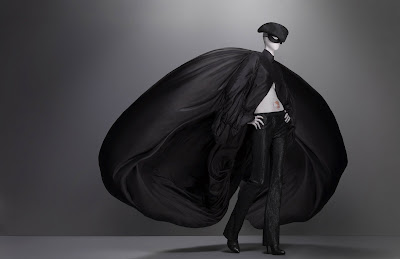

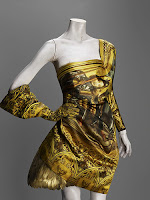
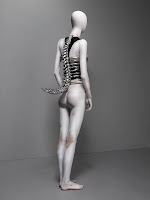
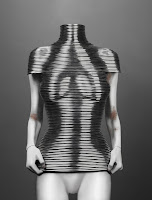
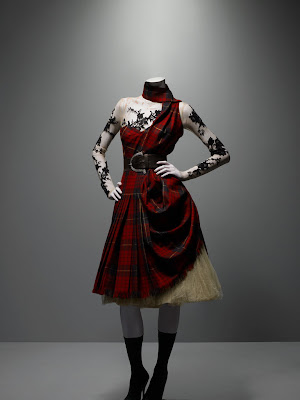


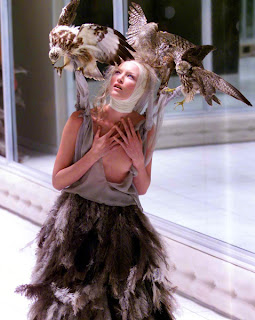
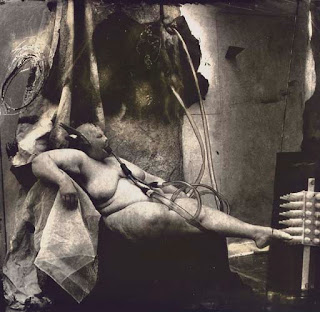
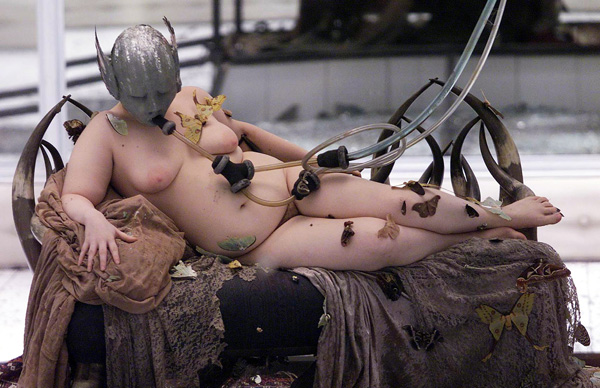
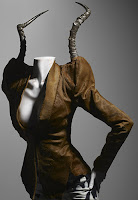
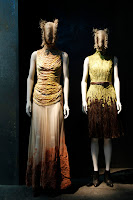
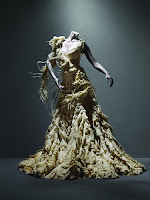


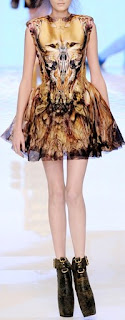


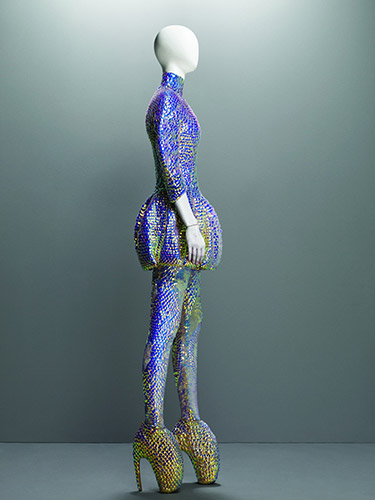

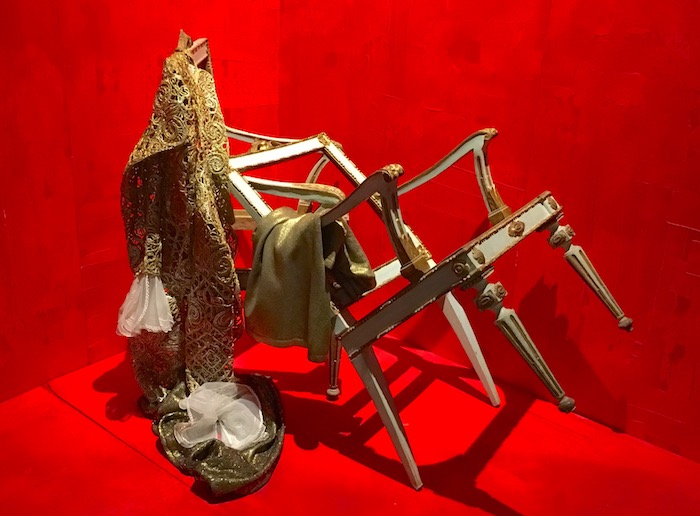
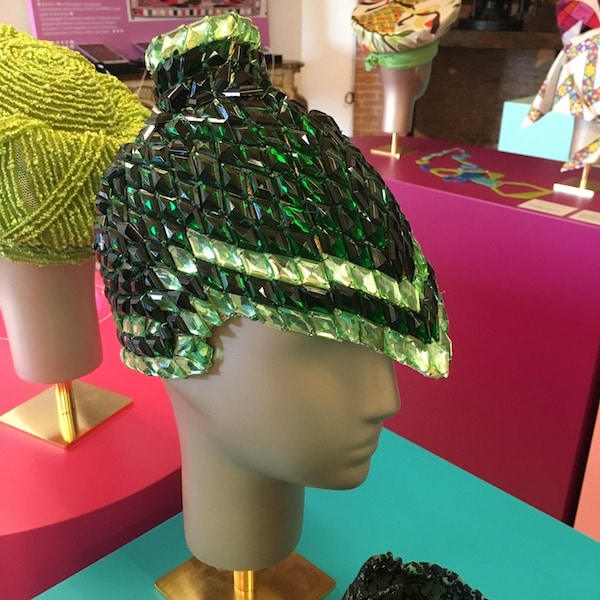
E’ una retrospettiva per la quale sarei disposto a tutto pur di andarla a vedere,McQueen è stato sicuramente un innovatore per quanto riguarda la moda, ha portato una ventata d’aria fresca che ha visto la fusione di arte e moda, cosa vista raramente prima di lui.
Buona giornata 😀
Bellissimo post!
Ti seguirò.
Sole